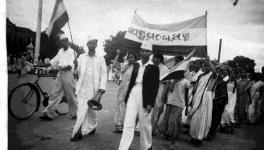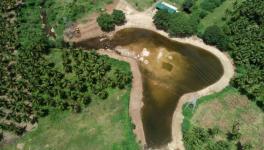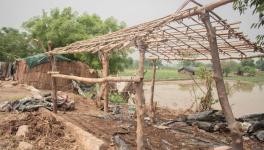History of the Conflict-Ridden Mullaperiyar Dam
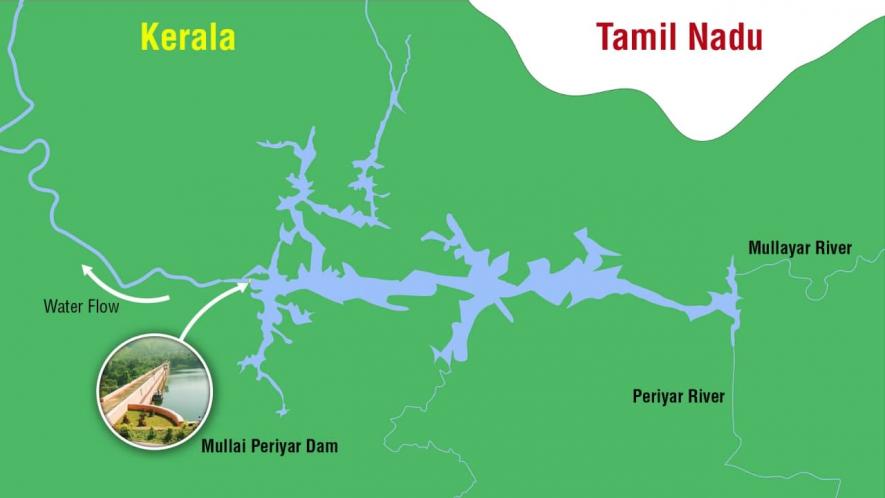
Water-flow to and from the Mullaperiyar dam. Image credit: Prakash R
The inter-state Mullaperiyar dam conflict has once again heightened after Tamil Nadu unexpectedly opened the shutters of the dam at night, despite Kerala repeatedly appealing the former not to do so. On the night of December 6, hundreds of houses in the downstream villages in the Idukki district of Kerala were inundated after Tamil Nadu increased the discharge at 9 pm.
This instance is only a part of the decades-old conflict between Kerala and Tamil Nadu over the Mullaperiyar dam. The crux of the conflict is that the dam is peculiarly located in the Idukki district of Kerala but is under the control of the Tamil Nadu government. But why is that the case?
To understand the exact nature of the conflict, a glimpse into the dam's history is necessary.
THE EARLY YEARS
The idea of constructing a dam to divert the westward flowing Periyar river towards the semi-arid agricultural lands east of the Western ghats goes way back to 1789 when a local administrator Pradani Muthirulappa Pillai envisioned it. He was a powerful minister to the minor zamindar Muthuramalinga Sethupathy of the Ramnad estate under the Madras Presidency.
Such a dam was conceptualised because the excess water in the Periyar river was wastefully flowing into the Arabian Sea. At the same time, the solely monsoon-dependent districts in the then Madura region of the Madras Presidency faced dire droughts.
Captain J L Caldwell, who was a part of the Madras Engineers of the Madras Army, scouted a location for the dam in 1808. It is located 2,890 ft above sea level on the Cardamom Hills of the Western Ghats in Thekkady town, Idukki District.
While the idea of a dam to divert water was good, it was not easy. Firstly, it was an expensive affair that required rigorous labour working for several years inside the unsafe dense forests. Secondly, the dam had to be built by the British inside the Travancore region, which was a princely state and out of Empire's bounds.
The Madras Presidency made the first formal attempt to construct a dam across the Periyaar in 1850, but it was given up after labourers sought higher wages citing unhealthy living conditions. But, the plan was still under discussion.
The infamous Madras famine of 1877, when anywhere from four to five million people perished under the ruthless tenure of Viceroy Lord Robert Bulwer Lytton, delayed and further reiterated the need for more sources of water.
DAM CONSTRUCTION
After years of going back and forth, the construction of the Periyar dam (as it was known then) was finally approved in 1882. Major John Pennycuick was in charge of preparing a revised project, which was finally approved in 1884.
It is said that the British government had to negotiate with the Maharaja of Travancore for 24 long years before the 999-year lease agreement was signed on October 29, 1886, between Maharaja of Travancore Visakham Thirunal Rama Varma and British India's Secretary of State.
The agreement granted full right over all the waters of the 100 acres of Mullaperiyar dam and the 8000 acres reservoir to the British government for a tax of Rs 5 per acre per year, totalling up to Rs 40,000 annually.
The construction began in 1887, and the dam was built with rock, limestone and burnt brick powder. The river's diversion was a great challenge for Pennycuick, and the temporary embankments used to restrain the water flow were destroyed by frequent floods. Due to this problem, the British authorities put a hold on the funds for the dam.
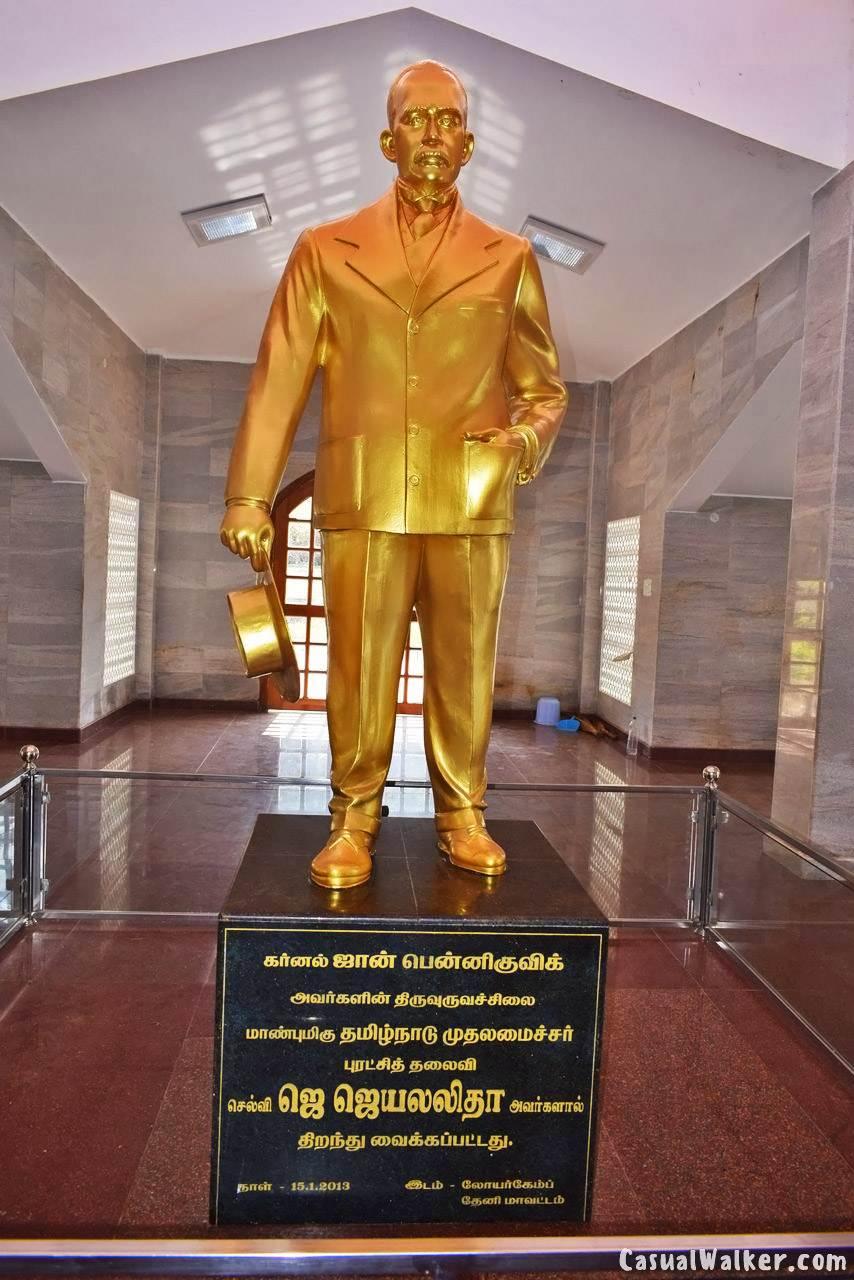
John Pennycuick statue in Pennycuick memorial in theni. Image courtesy: Casual Walker
It is popularly believed that Pennycuick raised funds by selling his wife's jewellery and property back home in England to continue work and complete the dam.
POST-INDEPENDENCE
After the British left India in 1947, Travancore and Cochin joined the Union of India to form Kerala in 1956. The new state government said that the earlier agreement signed between the British Raj and Travancore was invalid and needed to be renewed.
After several failed attempts, it was renewed in 1970, and the tax per acre was increased to Rs 30 and Rs 12 per kilowatt per hour for electricity generated using the Mullaperiyar water. It adds up to Rs 10 lakh per annum, which Tamil Nadu has been paying for over 50 years.
However, the entire discussion took a different colour after the 1979 Morvi Dam failure, killing up to 15,000 people in Gujarat. The Kerala government raised safety concerns over the ageing Mullaperiyar dam, situated in a seismically active zone and is likely not to withstand an earthquake above magnitude 6.
Since then, strengthening measures have been adopted by Tamil Nadu PWD under the recommendation of the Central Water Commission (CWC).
There have been disputes regarding the storage levels of the dam. In 2011, the CWC ordered the Tamil Nadu government to lower the storage from 152 feet to 142.2 feet then to 136 feet to conduct repairs work.
For Tamil Nadu, the Mullaperiyar dam and the diverted Periyar waters act as lifelines for Theni, Madurai, Sivaganga, Dindigul and Ramnad districts, providing water for irrigation and drinking. Whereas, for Kerala, the 100+ years old dam with significant structural flaws poses a risk to 3.5 million people if it were to fail.
Get the latest reports & analysis with people's perspective on Protests, movements & deep analytical videos, discussions of the current affairs in your Telegram app. Subscribe to NewsClick's Telegram channel & get Real-Time updates on stories, as they get published on our website.













